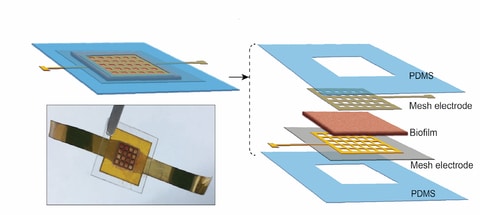University of Massachusetts Amherst researchers recently reported that they had developed a biofilm that could absorb evaporation energy and transform it into electricity.

The biofilm has a thin layer of bacterial cells with the thickness of a sheet of paper and is created spontaneously by a strain of the Geobacter sulfurreducens bacteria. Electric devices have been powered by “microbial batteries” made of G. sulfurreducens, which are known to create electricity. However, these batteries need G. sulfurreducens to be adequately cared for and provided a regular diet. By contrast, This novel biofilm, which can produce as much energy as a battery of comparable size, if not more, functions and produces energy continuously because it is dead. Additionally, since it is dead, feeding it is not necessary. This biofilm, which is a thin layer of bacterial cells the thickness of a sheet of paper, is created spontaneously by a strain of the Geobacter sulfurreducens bacteria. G.
“This is a very exciting technology,” says Xiaomeng Liu, a graduate student in electrical and computer engineering at UMass Amherst’s College of Engineering and the paper’s lead author. “It is real green energy, and unlike other so-called ‘green-energy’ sources, its production is totally green.”
Its ability to generate electricity from the moisture on your skin is the key behind this novel biofilm. Even though we hear about solar energy regularly, at least half of the solar energy that reaches the earth is used to evaporate water. The other senior author of the study and professor of electrical and computer engineering at UMass, Jun Yao, claims that this is a sizable untapped source of energy. The biofilm can “plug in” and transform the energy locked in evaporation into enough energy to power small gadgets because the surface of our skin is continually moist from sweat.
“Our next step is to increase the size of our films to power more sophisticated skin-wearable electronics,” says Yao, and Liu points out that one of the goals is to power entire electronic systems, rather than single devices.
Click here for the published research paper






